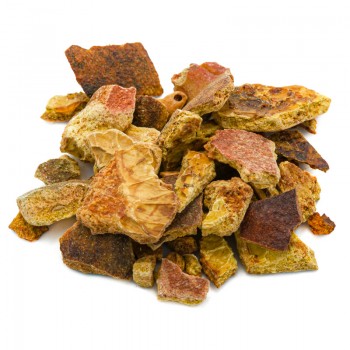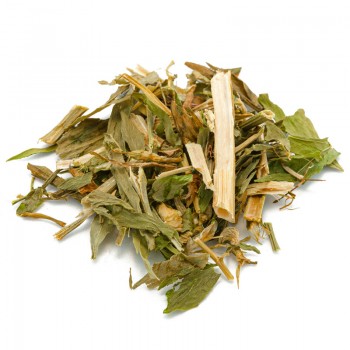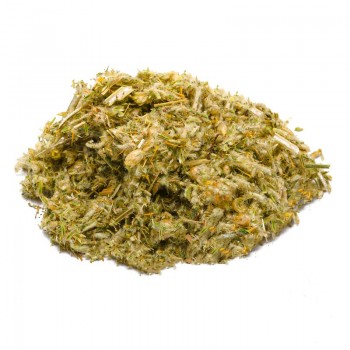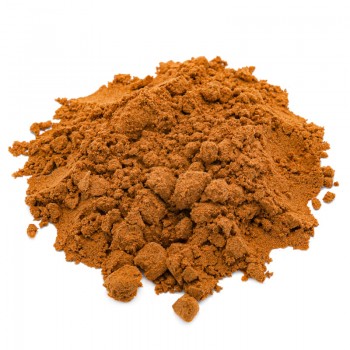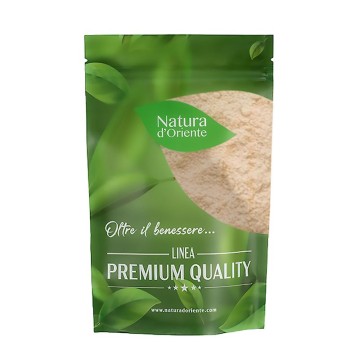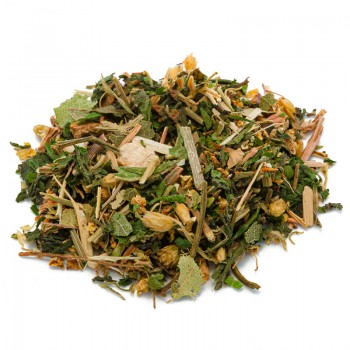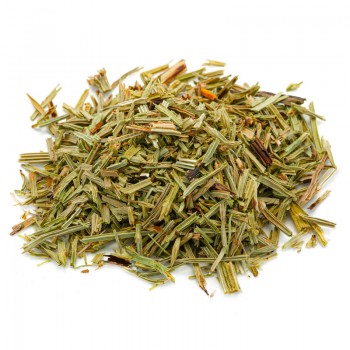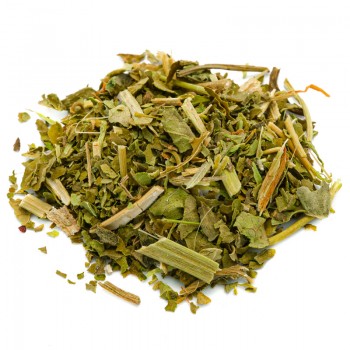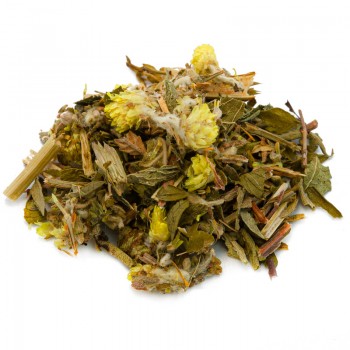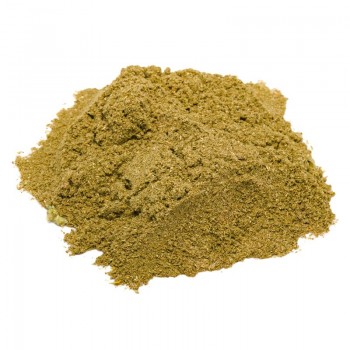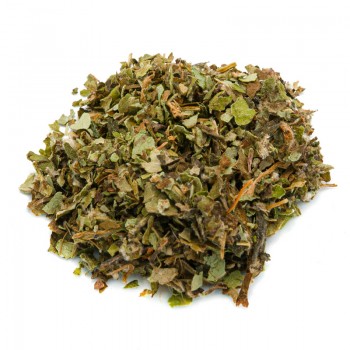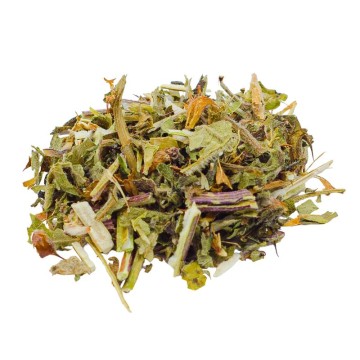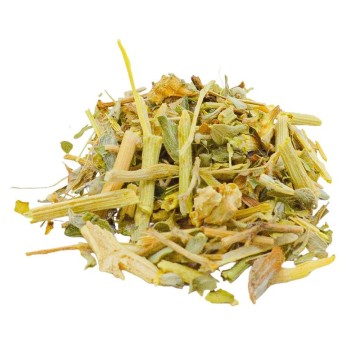Agar Agar is a gelatinous substance, obtained by separating the tissues (thallus) of some red algae through special methods. The algae used are extracted from the depths of the Pacific Ocean, and make this product with neutral characteristics: it does not have a particular smell or taste.
Agar Agar: properties and benefits
This herbal jelly becomes an excellent thickener in powder, used for different uses in pastry and not only, also for infusions dedicated to wellness.
Usually Agar Agar helps to make a thicker consistency in different recipes, and is one of the main ingredients of vegetable jellies.
Definitely, for recipes it is a good vegetable alternative to gelatin of animal origin in the food industry. A herbal jelly is particularly important for those who follow a vegetarian and vegan diet.
Agar Agar powder can be added as a thickener to ice creams, puddings, jellies, cream cheeses, milk, yogurt, sweets, biscuits, or used as an ornamental gel for cake design creations.
Can be used in the creation of jams, honey and butter to reduce the sugar content. The perfect feature is that it releases no further flavor into the food. Agar powder added to baked goods allows for a transparent appearance and prolongs shelf life.
Furthermore, for digestive well-being, it is possible to take an infusion with Agar Agar before meals, which allows to avoid swelling during and after digestion.
This happens because the many mucilages present in the algae dust are beneficial for the intestine.
Agar Agar is indicated for those suffering from constipation, and in the case of hemorrhoids as it softens the waste in intestinal transit.
An infusion of Agar is also suitable for those who have symptoms of colitis, due to its soothing properties on the colon walls, and refreshing thanks to its mucilage.
For those who want to lose weight, Agar Agar can help to calm hunger, since its consistency absorbs water and increases the sense of satiety. A possible transverse action is also useful for glycemic control,
This powder, once in the body, is not attacked by gastric juices, and carries out its beneficial action without interference. Therefore, it maintains the nutritional values of vitamins, mineral salts and Omega-3.
Origins and History of cultivation
Agar Agar in powder is obtained through a complex process, discovered first in the East and then in the West, which starts with the drying of some red algae.
The original manufacturing method of Agar is thought to date back to the 17th century. According to a legend, a Japanese officer was offered the traditional dish of seaweed jelly, which was prepared with water. Observing the gelatine first freeze and then melt in the sun, one sensed its reusable gelling potential of this algae.
Since then, Agar has been used in the East in the form of a sweet and flavored gel, known as Kanten (cold) in Japan, or Dongfen (frozen powder) in China. < / p>
The word Agar instead comes from Malaysia, doubled to define some seaweed jellies from the East Indies.
Europeans learned to use this product to make fruit jellies, and introduced it to Europe more recently, in the nineteenth century. It was in the twentieth century that agar production took place at an industrial level in the United States, then in Spain and Portugal.
Agar Agar powder is used today in various sectors, from the food industry to the pharmaceutical and cosmetic industries.
In countries that prefer halal products, they use this Agar Agar instead of gelatin, to create a protective and shiny layer in pastry. It is also used to thicken the milk of babies.
The classic preparation to transform the powder into a gel is done by pouring the powder into a boiling liquid and letting it cook for about 2 minutes, stirring often.
The gelation takes place at a temperature between 35 and 43 ° C, and melts at temperatures between 85 ° C and 95 ° C. It is a thermoreversible vegetable gelling agent: it can be dissolved and then solidified several times.
It is also used as an alternative to isinglass, and one teaspoon of Agar Agar corresponds to approximately 7 sheets of isinglass.
In cosmetics it works for the preparation of herbal tints. Pouring a spoonful of Agar before adding the hot water will make the mixture easier to spread on the hair.
Dentists also use Agar to create and manipulate dental prosthesis molds with a healthy material. Furthermore, purified Agar can be used as a solid or semi-solid culture medium for the growth of microorganisms in laboratory analyzes.
Plant - Alga
The red algae from which Agar Agar is extracted are usually Gracilaria, Gelidium, Pterocladia and Ahnfeltia algae.
The cell walls of these algae are used for their “gelatinous” property. Agar Agar is a hydro-colloid naturally synthesized in the tissues of algae, formed by a mixture of polysaccharides such as Agarose and Agaropectin.
If Agarose is the natural gelling agent, Agaropectin is a polysaccharide that influences the solubility and characteristics of the vegetable gel.
Agarophytes, the red algae used as raw material, are present in several countries, and if Gelidium produces the best quality of Agar, we know however that its cultivation is difficult.
Pterocladia and Ahnfeltia species also grow only in a few regions (Pterocladia capilacea in Egypt, Japan and New Zealand, Pterocladia lucida only in New Zealand, and Ahnfeltia plicata in USSR) .
Gracilaria is mainly used, grown in several countries: South Africa, Philippines, Chile, China, Taiwan, India, U.S.A
The family includes the Eastern Gelidiella acerosa and Gelidium amansii, species such as Gelidium cartilagineum in the Americas and South Africa, the Gelidium corneum and Gelidium sesquipedale also widespread in Spain, Portugal and Morocco, the Japanese Gelidium liatulum and Gelidium pacificum, the Chilean Gelidium lingulatam, the South African Gelidium pristoides.
Nutritional values of Agar Agar
This gelling agent of natural origin, has no caloric content.
It is a polysaccharide that contains mucilage and the gelatinous substance of carrageenan, vitamins, mineral salts and Omega-3.
These elements of Agar can transform liquids into jelly, without altering the taste of food.
How to consume Agar agar as a herbal tea and in the kitchen
For a good infusion, the content of one level tablespoon of Agar powder should be poured into a cup, adding boiling water.
Leave under the lid for about 20-30 minutes, then strain and sip.
Agar agar: side effects and contraindications
It is important to evaluate the amount of powder used, to avoid overdosing and unwanted effects.
You should consume no more than 3 grams per day, to avoid greater laxative effects, intestinal disorders and diarrhea. In case of excessive consumption, in fact, the intestinal flora can deteriorate, and the large mass of fibers can create abdominal swelling.
Also, beware: it must be taken with enough water, otherwise it can swell in the esophagus and cause problems.
However, if you are taking any medications, it has to be evaluated, because Agar Agar could interfere with the absorption of the active ingredients of the medicine - so it is always advisable to consult your doctor.

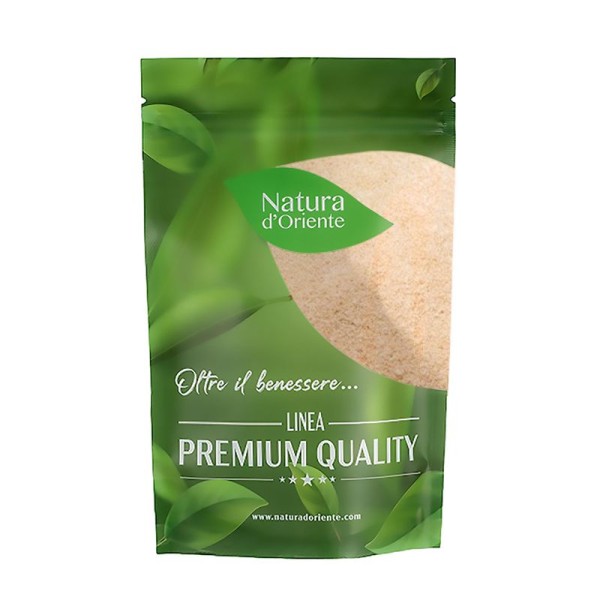









 No reward points for this product.
No reward points for this product.

